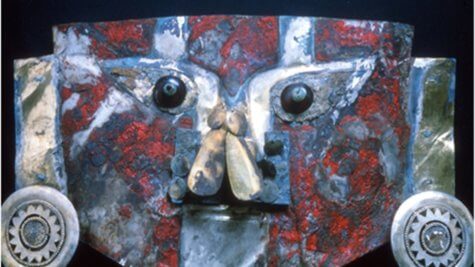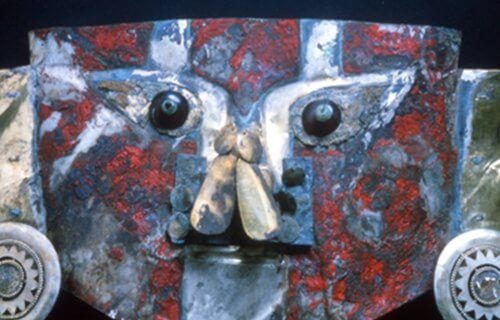OXFORD, England — The pre-Inca Sicán society, which thrived from the 9th to 14th century was a major civilization in Peruvian history. The Sicán lived in the northern region of current Peru on the coast. Nearly 1,000 gold artifacts were placed in the graves of the aristocracy throughout the height of the culture from about 900–1,100 AD. One finding in particular is now believed to shed light on rituals and practices of the elite members of the society.
Nearly thirty years ago, an archaeology and conservation team headed by Izumi Shimada unearthed the grave of a man found to be of superior social status. The middle-aged man’s remains were decorated in crimson color and set inverted toward the middle of the tomb. Beside his remains, the team discovered the remains of two females: one in a delivery position and one in a different position suggesting she was a midwife. Additionally, the remains of two children were placed above the other skeletons, each in a squat-like pose.
The man’s head had been severed from his body and concealed with a mask made of gold, decorated in crimson. Several other gold objects were found, leading the researchers to investigate the positioning of the bodies. They also examined the substance used to adhere the color to the gold objects, which has lasted for over a thousand years.

Study co-author Luciana de Costa Carvalho, of the University of Oxford’s School of Archaeology, joined forces with James McCullagh, a biochemistry professor at the university and director of the Mass Spectrometry Research Facility. They tested some of the color from the mask using Fourier transform-infrared spectroscopy, or FTIR. FTIR is often used to identify compounds such as blended materials, fillers, paints, coatings, and adhesives.
Results indicated proteins within the color particles which led researchers to test the color sample again via mass spectrometry. This technique, which scans for specific proteins in substances, detected the protein albumin and the antibody immunoglobulin G, which are normally found in human blood.
Four additional proteins were also identified, including ovalbumin normally found in bird eggs. Because the molecular structure of the proteins had broken down, the team was not able to determine which bird the sample came from. However, one possibility is the Muscovy duck, one of the oldest duck species known to exist in areas of Peru.
Researchers believe that the way in which the remains were assembled was meant to represent a sort of second-coming of the elite Sicán man. “The presence of human blood would support previous ideas that red cinnabar paint may represent ‘life force’ intended to support ‘rebirth,'” they write.
The authors hope the findings will help authenticate similar masks and other relics displayed in museums or private collections.
These findings are published in the Journal of Proteome Research.
